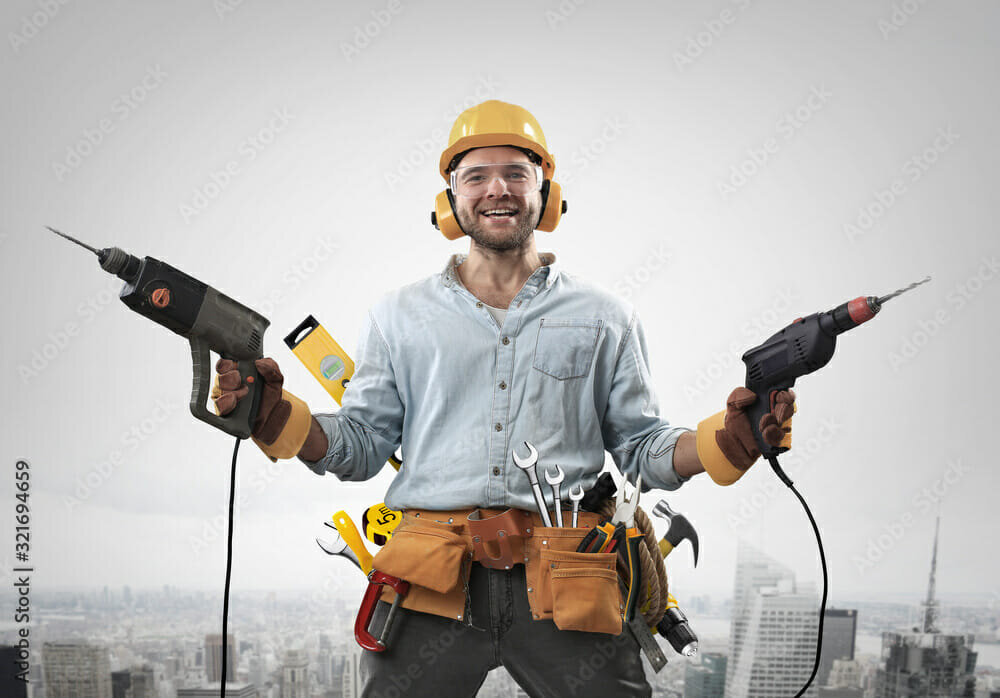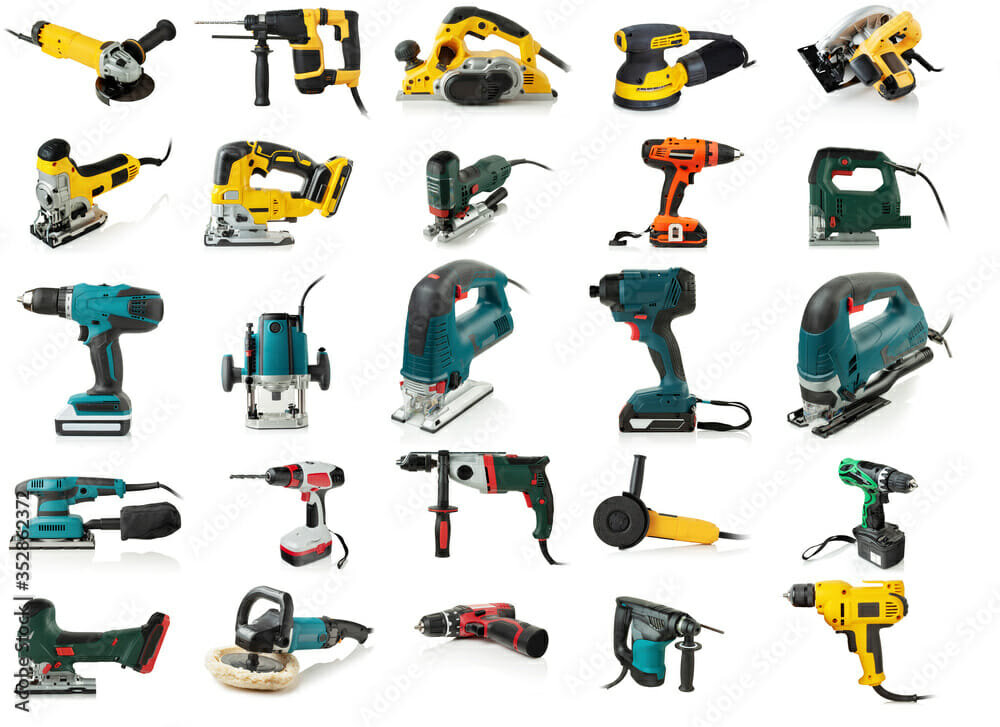
Power tools are a requirement for many projects and tasks. These devices are indispensable, from basic household repairs to more complex construction projects.
However, it’s crucial to understand the best practices and common hazards associated with using power tools. This will maximize everyone’s safety while minimizing the risk of injury or property damage; therefore, making the tools safe to use for professionals or DIYers.
This post discusses these best practices for using power tools. Keep reading to learn more.

Best Practices For Working With Power Tools
High-powered machines are powerful, efficient, and versatile tools that help you quickly complete projects. Although there are different types of power tools, there are standard practices that you can use for all to avoid hazards. They include:
- Ensure Safety First
Safety is always a priority number one when it comes to operating any powered type of tool or machinery. Before beginning any project involving these tools, carefully read all related instruction manuals.
Follow manufacturer recommendations such as speed settings as well. This is especially true if you’re still getting familiar with the equipment. The instructions will help you learn how the machine works. They’ll also bring to your attention the precautions to take. For instance, running a device too fast can put unnecessary strain on its components which could lead to failure over time.
Another important safety measure is wearing appropriate attire. Clothes such as long pants and sleeves or closed-toe shoes are a requirement. Protective gear, like goggles, gloves, face masks or ear protectors, is paramount too. These gear help protect you against physical contact with the tool in case of mishaps or flying debris that may cause you harm.
- Know The Basic Principles Of Operation
When starting up a power tool, always ensure the area around you is clear. Ensure there’re no objects in the way that could be struck by a moving part or throw you off balance. Check that all the cords are safely connected to an appropriate outlet before plugging anything in.
And it’s important to always use both hands on the handles and never try freehand work with a power device. This helps ensure the machine doesn’t overpower you, which could lead to accidents.
In addition, keep in mind basic operational regulations, like never pointing a device directly at yourself or anyone else. This could cause serious harm if it malfunctions.
Additionally, use long cords to move around freely without tripping over or disconnecting your device. After use, always remember to unplug the equipment to avoid electrical shock or fires.
- Use The Correct Tool For The Job
High-powered devices come in many different shapes and sizes depending on what type of job they’re intended for.
Electric-powered saws, drills, sanders, grinders, and routers are commonly used for cutting materials like wood, metal, or plastics. Air-powered nail guns are great for fastening materials together, and cordless drills are for drilling holes in various surfaces. Precision tools like jigsaws, biscuit joiners, or bandsaws are used for specific applications.
Always make sure you use the right tool for whatever job you’re doing. For example, never use a drill bit meant only for wood on metal. Such incorrect usage could lead to injury or damage due to inappropriate usage.
- Start Slowly To Learn The Power Of The Tool
While working with your power devices, start slowly. Please make it a habit to always get a feel for the tool before going full-bore into whatever job you have. This is a helpful tip for using new equipment. It helps you familiarize yourself with the power of the machine.
Nonetheless, even for older tools you’re used to, starting slowly is helpful. You can establish a faulty power tool by starting it slowly instead of using it full-throttle. The earlier a problem is established, the earlier an accident is prevented.
- Ensure You Regularly Maintain Your Power Tool
Regularly maintaining your power devices is key to getting the most out of them and avoiding hazards. Check all cords for damage before use and replace any frayed or worn cords immediately to help prevent electrical shocks and fires.
Ensure the blades on saws and other cutting tools remain sharp and properly aligned. Dull blades aren’t recommended and are dangerous, as they require more force to cut through materials.
In addition, ensure all guards are working correctly, oil moving parts regularly, and clean off motor dust. Likewise, check that all screws are tight so that vibration doesn’t loosen them over time. Inspect the tool after each use as well to ensure it’s still in good condition.
Working safely with power tools requires following the above-mentioned practices to ensure an injury-free experience. By adhering to these basic principles, you’ll complete projects quickly and efficiently while avoiding unnecessary accidents.
Common Hazards To Avoid When Using Power Tools
The right tool often makes a job more straightforward due to the speed of operation and sheer force generated by electric motors. Nevertheless, there are many common hazards to avoid. They include:
- Electrical Hazards
One of the most common hazards associated with using power tools is electrocution. If used in a damp environment, they could cause an electric shock, leading to severe injury or even death. To avoid this hazard, always ensure your working area is dry and moisture-free before plugging in and using your power device.
Furthermore, never use an extension cord with a power tool unless necessary. Most cords can’t stand the power watts needed to run the machine. Therefore, they could overheat and cause electrocution. If you must use an extension, ensure it’s rated for the correct amperage and wattage specified by the manufacturer.
- Noise Problems
Noise is another issue to keep in mind. Exposure to loud noises for extended periods can cause hearing loss, tinnitus, and other ear-related problems.
It’s imperative to wear hearing protection such as earplugs or muffs when operating noisy machines. Keeping others in the workspace away from noise sources is also vital. You can use barriers such as partitions or soundproofing curtains and any other noise cancellation technology if necessary.
- Fire Dangers
Another risk of power tools is fire. Sparks could cause fire from cutting metal objects or static electricity buildup produced by friction between materials. Taking precautions such as keeping combustible materials away from powered machines, not wearing loose clothing or jewellery, and keeping a fire extinguisher nearby can help reduce the fire risk.
- Kickback Risks
Another potential hazard when using power tools is kickback due to improper usage. Kickback occurs when the blade of a cutting tool suddenly moves in an unexpected direction. This can result in physical harm to nearby individuals or damage to other items within reach.
Hold the tool firmly with both hands while guiding the material through properly aligned blades to reduce the risk of kickback. Refrain from forcing material through too quickly, as this will increase the chances of kickback occurring. Instead, slow down and apply steady pressure throughout the operation instead.
- Inhaled Particle Perils
Working with power tools often generate particles such as wood chips, metal filings, and dust after each task. These may be easily inhaled into the lungs when operating machines without proper ventilation. To reduce the risk of inhaling dangerous particles, use appropriate safety equipment like face masks, respirators, and dust collectors
To boot, while working on projects that generate airborne particles, set up fans near your workspace. This will ensure adequate air circulation throughout any workshop space where you regularly use powered machinery.
Power tools offer many benefits, yet they’re riddled with inherent dangers that should be taken seriously. By familiarizing yourself with them, you can protect yourself and others from these common hazards.
Summary
The use of power equipment requires knowledge about the best practices and common problems associated with operating them. It’s important to remember that you should always use them with caution and care to ensure you do so confidently. Following these guidelines will help you ensure your project runs while keeping everyone involved safe at all times.
